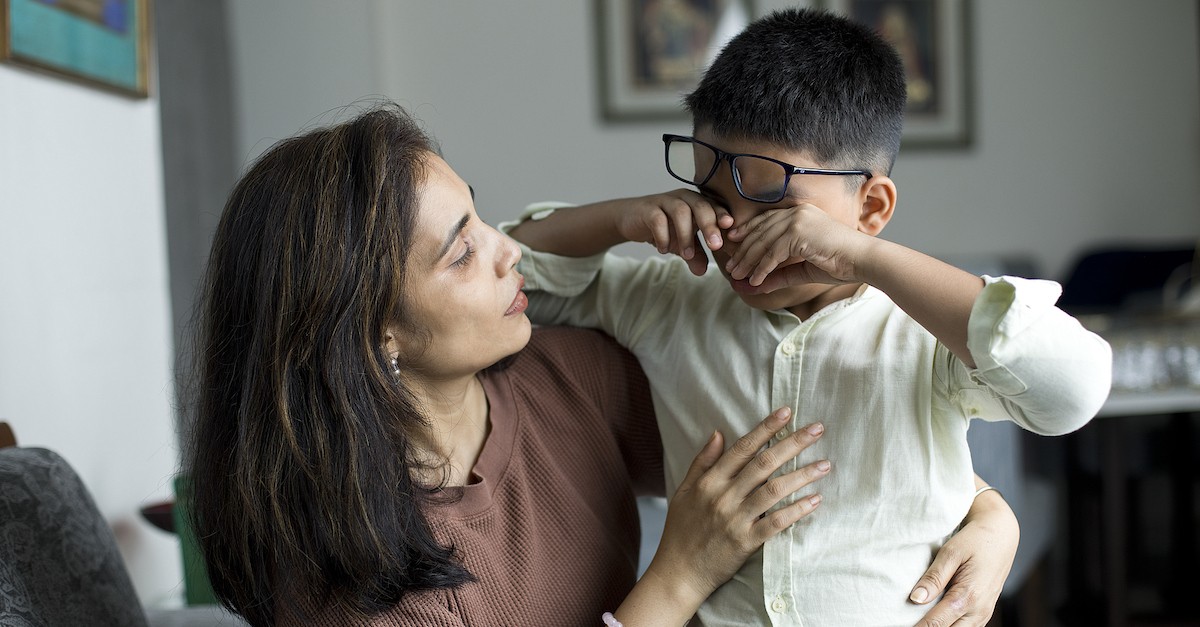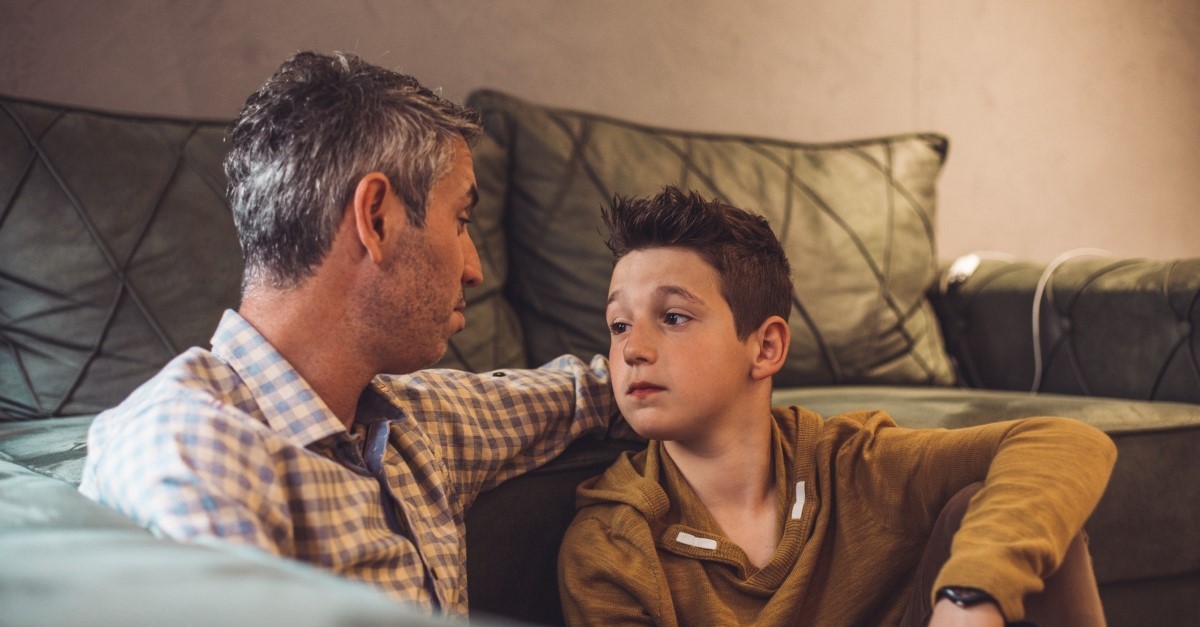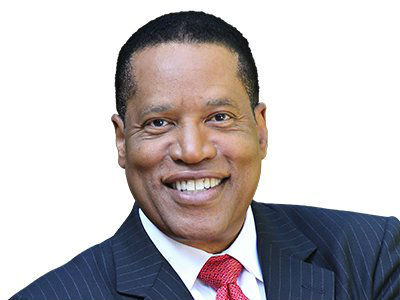7 Reasons Not to Put Your Children in the Middle of a Messy Separation
Divorce and Remarriage


Audio By Carbonatix
By Carrie Lowrance, Crosswalk.com
When most people get married, they expect to stay that way for the rest of their lives. But sometimes that’s not possible for many reasons. Sometimes there is abuse involved, a job loss, growing apart, and a myriad of other reasons people choose to separate. If you have kids, this makes it even more difficult. With emotions running high, parents can inadvertently (and sometimes advertently) put their kids in the middle of things. Here are some reasons not to put your child in the middle of a messy separation.
Understanding the Emotional Impact on Children
Conflict is a part of many families and can take many forms, like physical altercations, verbal disagreements, and emotional estrangement. It doesn’t matter what kind of conflict it is; children often get caught in the middle and are affected by this.
Conflict in the family affects children, including:
-When children witness conflict, it creates an environment of tension and fear.
-The quality of the relationship with their parents influences how children experience conflict.
-Unresolved conflict at high levels affects various emotional and developmental issues in children.
Age and Development
Children’s reaction to parental conflict differs with age. Infants don’t understand conflict, but they can sense tension, which affects their emotional health. Toddlers and preschoolers may become anxious and exhibit regression behaviors such as thumb-sucking and bedwetting.

1. The Long-Term Consequences of Involvement
Reason not to put them in the middle of your separation: Long-term consequences.
Conflict doesn’t just affect kids short term; it affects them in the long term as well. Understanding the long-term effects of conflict on a child is important for everyone in the child’s life to understand, from parents to extended family to educators and beyond.
One long-term effect of conflict is ACEs (adverse childhood experiences) which are caused by continuous exposure to stressful circumstances. These experiences can lead to significant emotional and cognitive hurdles that children need to overcome, such as anxiety, depression, and a higher chance of having a mental health disorder in adulthood.
A child’s stress response system is extremely sensitive, and prolonged exposure to stress can cause a hindrance of emotional regulation and the inability to form healthy attachments, which sets a precedent for chronic health issues and difficulties in adulthood.

2. Creating a Safe and Supportive Environment
Reason not to put them in the middle of your separation: They won’t feel like they have a safe environment.
It’s crucial to create a safe and supportive environment for your kids during a separation. They need to feel loved, valued, and heard. Talk to them and help them navigate their feelings and develop resilience. Here are some ways to do this.
Establish a Routine: A consistent daily routine will help kids feel normal and secure. Setting predictable patterns for mealtimes, homework, and bedtime will reduce anxiety. Establishing these routines will also help foster connection.
Open Communication: Always keep the dialogue open. This will help your kids express their thoughts and feelings. Create a safe space for children to discuss their thoughts and emotions without fear of judgment or repercussions. Practice active listening, validate their feelings, and provide age-appropriate explanations about the situation and what’s going on. Children will feel heard and understood, relieving their stress.
Encourage Emotional Expression: Provide alternative methods for your children to express their feelings. It’s hard for them to verbalize things when they are little. Let them do art, music, or play therapy to serve as outlets of expression.
Promote Positive Relationships: During the separation, make sure your kids have stable positive relationships with the surrounding adults. These could be friends, family members, or even counselors, who can provide an extra source of comfort. Another important point is to make sure kids maintain a relationship with both parents—they will benefit from their love and support.
Create a Safe Physical Space: Make sure their physical environment is safe from conflict, has positive reinforcement, and has lots of sources for relaxation, such as books, toys, and comfortable spaces for downtime.
Model Coping Strategies: Show your children positive coping strategies for managing stress, including problem-solving skills and resilience.
Maintain Social Interaction: Keep their social network intact by regularly seeing friends, family members, and participating in extracurricular activities. This will help them feel supported and understood.
Professional Help: If you feel like therapy could be helpful, take your child to get the help they need.

3. The Role of Effective Communication
Reason not to put them in the middle: Poor communication.
Putting your child in the middle of your separation will subject them to poor communication. I’m not talking about just hanging up on each other; I’m talking about talking poorly about each other or other family members (grandparents, uncles, and aunts) and talking badly about your spouse or significant other.
Instead, all parties should practice effective communication. This means having clarity and keeping the dialogue open. Other things to consider are:
Establishing trust and safety: Letting kids express their thoughts, feelings, and emotions without fear of judgment or retaliation.
Reduce anxiety and confusion: Changes, especially sudden ones, can cause anxiety and confusion in kids. To help them with this, break down the situation into smaller parts and explain what’s going on in an age-appropriate manner. Be clear about what to expect, which will help them manage their emotions.
Encourage expression of emotion: Let your child know they can come to you with their emotions, no matter how they feel.
Enhance problem-solving skills: Bring your kids in on discussions and guide them through identifying problems, coming up with ideas, and weighing outcomes.
Resilience and adaptation: Talk to your kids about what’s going wrong, what they can learn from it, and how to deal with similar situations in the future.
Effective communication is important in any situation, but especially in a major life event like a separation.

4. Avoiding "Parentification" and its Risks
Reason not to put them in the middle: Parentification (making kids take on parental roles).
Parentification is one of the most common and damaging things that occurs with separations and divorces. A child takes on responsibility that is typical for adults in this situation. Parents do this because of emotional or physical needs, and parentification occurs in various forms.
Emotional parentification: This means a child takes on an adult role by emotionally supporting a parent. For example, comforting a depressed parent, which is a role they shouldn’t have to play.
Instrumental parentification: This is when children take on household duties like cooking, cleaning, and taking care of younger siblings.
Dangers of Parentification
Emotional Distress: When children take on adult roles, they experience great stress and anxiety.
Disrupted Development: When kids miss out on important childhood experiences that develop social skills and personal growth, like making friends and playing, their emotional and social development is stunted.
Impaired Relationships: When children are forced into adult roles, they will struggle to form healthy relationships. They may struggle with boundaries later in life, which affects their friendships and romantic relationships. Not being able to establish equal, reciprocal relationships can lead to a life of dysfunction.
Identity Crisis: Parentified Children can develop a skewed sense of self, which is defined by their role in the family rather than based on their interests or desires. This can lead to an identity crisis where they don’t know who they are outside of their family obligations.
Making Kids Choose Sides: This happens when parents vent frustrations or engage in disputes, forcing the child to pick one parent over the other. This leads to split loyalty, which means they feel torn between wanting to support one parent while still caring about the other. Making your child choose sides is damaging and leads to guilt and confusion.

5. Setting Boundaries: Protecting Children from Adult Issues
Reason not to put them in the middle: They get caught up in adult issues.
Kids are very perceptive and can pick up on emotions or tension in their surroundings, which can lead to emotional distress and confusion. Maintaining boundaries for your kids during separation is crucial.
Understanding the Impact of Adult Issues on Children
Let’s start with how adult issues manifest in your children’s lives. Arguments, disagreements, and the silent treatment can lead to:
-Emotional turmoil causes a sense of confusion and fear, and the feeling that they are in a conflicting environment that they can’t escape.
-Behavioral changes like digressing to thumb sucking, bedwetting, or tantrums.
-Long-term effects can impact future relationships and coping mechanisms, including long-lasting implications on mental health.
How to Shield Your Kids from Adult Issues
-Communicate openly and calmly.
-Avoid conflict displays, like arguing in front of the kids. If something escalates, take it to a private area to hash things out or postpone your discussion until you both can remain calm.
-Allow children to express feelings and ask questions. Provide honest, age-appropriate feedback to help navigate their emotions.
-Use age-appropriate language to explain difficult situations so kids can understand.

6. Promoting Healthy Coping Mechanisms
Reason not to put them in the middle: They don’t know how to cope.
Teaching your kids coping mechanisms to deal with changing family dynamics is important. Here are some ways to do this.
-Keep communication open.
-Active listening.
-Establishing a routine.
-Involve your kids in creating routines.
-Encourage expression.
-Model positive coping strategies.
-Seek support if needed.
-Promote problem-solving skills.
-Encourage positive relationships.
-Provide reassurance.

7. Encouraging Positive Relationships with Both Parents
Reason not to put them in the middle: Pitting your kids against each other or making them choose sides doesn’t help anyone.
Encouraging your child to have a positive relationship with both of you is important. Sure, there are special situations where this can be difficult, like when abuse and a child are involved. It’s very hard to have a positive relationship with a parent after something like that. But overall, in normal families, relationships with both parents are beneficial. Children thrive in all areas of their lives when these two most important relationships are intact.
Having a dual relationship with both parents benefits the child in the following ways:
-The child has emotional stability.
-Children have good social development.
-Children who have relationships with both parents are successful academically.
-They learn how to model healthy relationships from both parents.
Strategies to Encourage Positive Relationships
-Co-parent effectively. This means open lines of communication, respectful discussions, and regular meetings and check-ins.
-Engage in shared activities with your child.
-Consistent contact through phone calls, video chats, and visits to maintain connection.
-Both parents should take an active role in the child’s life.
-Respect each other’s parenting styles.
-Acknowledge and celebrate the child’s relationship with both parents.
-Handle conflicts and challenges respectfully.
Going through a separation is hard on everyone in the family. By not putting your kids in the middle and keeping the consequences in mind, you can help your kids grow into happy, healthy, well-adjusted adults.

























